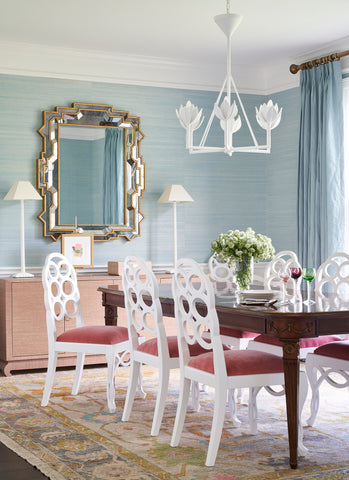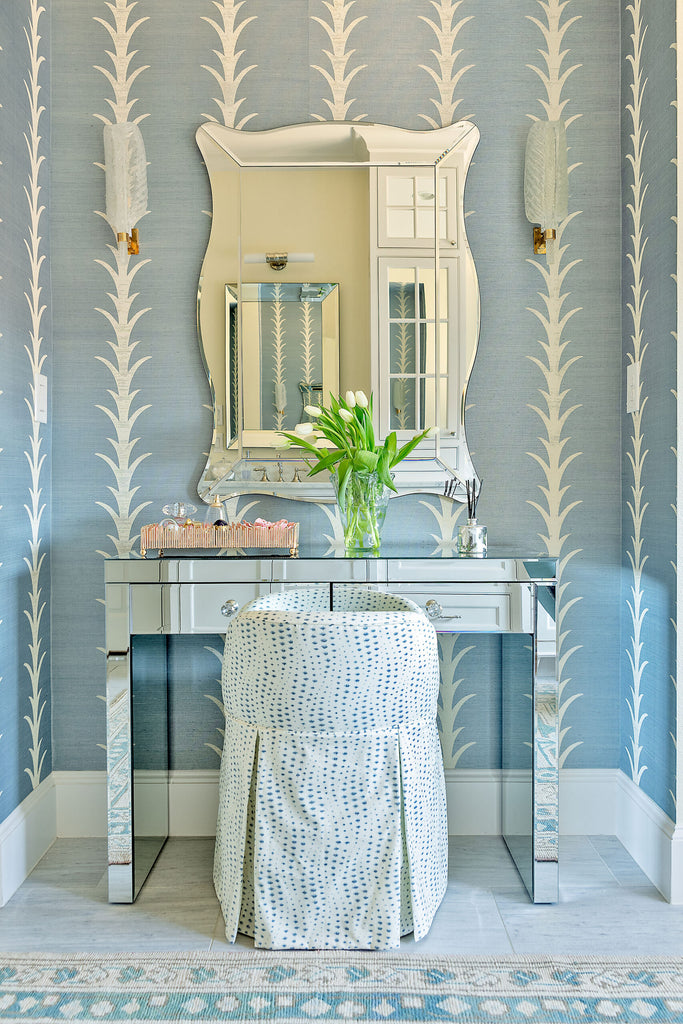Grasscloth wallcoverings are having a resurgence. Enormously popular in the 1960s and ’70s, these environmentally friendly natural fibers have been considerably upgraded, with fresh new appeal. The weaves are more intricate, the textures more refined and the color palettes vastly more interesting than the browns and burlaps of the ’70s. But one thing hasn’t changed: Grasscloth still adds a sophisticated shot of warmth and dimension to any room.

But What Is Grasscloth? The name is a little misleading. While grasscloth can be made from natural grasses like arrowroot, it’s a catch-all term used for wallcoverings made of natural fibers with a paper backing. The fiber can be anything from hemp, jute, bamboo or raffia to seagrass and sisal. While the grasscloths of yore tended to be undyed and available only in basic textures, today they’re woven and sewn and even inlaid to achieve a wide range of textures and intricate patterns. They can also be dyed in brilliant hues, printed with patterns and mixed with metallics.

What Makes Grasscloth Wallpaper So Special? Natural fibers vary greatly in their color and texture—and that’s a big part of their appeal. They also absorb dye unevenly, resulting in beautiful variations and subtle shifts in color. Because rolls of grasscloth are made up of individual fibers, they tend to have a sophisticated striated texture that’s impossible to imitate with vinyl or other man-made materials.

Why Do I Need to Hire an Experienced Installer? Grasscloth is slightly more complicated to handle than other types of paper. The rolls are generally wider than typical rolls—often 36 inches wide versus the standard 21- and 27-inch widths—and water can easily leave behind visible stains (more on that below). Only a skilled installer can handle the wider widths while ensuring that no moisture or adhesive comes in contact with the face of the wallcovering during the installation process. Also, unlike mechanically made or printed wallcoverings, every roll of grasscloth is entirely unique. There is no way to make the size of the fibers and depth of color match exactly.
Before hanging, the rolls should be laid out side by side to find the best match from piece to piece and achieve a steady gradient. An experienced installer can ensure the best results with seams that look as neat—and purposeful—as possible. The resulting paneled effect is considered a hallmark of grasscloth. Expect and celebrate it! If a seamless look is required, a different type of wallpaper is probably in order.

Where Should I Use Grasscloth? Gorgeous as it is, grasscloth wallpaper isn’t right for every room in the house. Since contact with water can easily leave behind noticeable watermarks and stains, or cause the natural dyes to bleed, grasscloth is ideal for spaces that are likely to stay high and dry—bedrooms, living rooms, dining rooms and studies. Avoid kitchens and bathrooms, where splashes and spills are inevitable. Grasscloth is also somewhat delicate and hard to patch (repairs will be noticeable), so it’s not recommended for tight hallways, playrooms or other high-traffic areas where bangs and bumps are likely. Intense sunlight can also fade and shorten the life of grasscloth, particularly if it’s dyed a dark color; it will last the longest in rooms with indirect light or good sun-filtering shades.

How To Keep It Gorgeous! The best way to care for natural fiber wallcoverings isn’t so different from caring for natural fiber rugs: regular vacuuming! Use a soft brush attachment and gently vacuum the walls from different directions, making several passes over the surface to prevent dust and soil from building up. And, as mentioned above, avoid contact with water, liquid cleaners, shampooing or steam cleaning, which will stain the fibers and can also cause shrinkage and dimensional changes. If a spill does occur, immediately blot it with a clean white cloth (scrape off any solids with the blunt edge of a butter knife or offset spatula before blotting). If you hire a professional cleaner, be sure they use a dry extraction cleaning method and test a small, inconspicuous area before tackling the entire wall.

